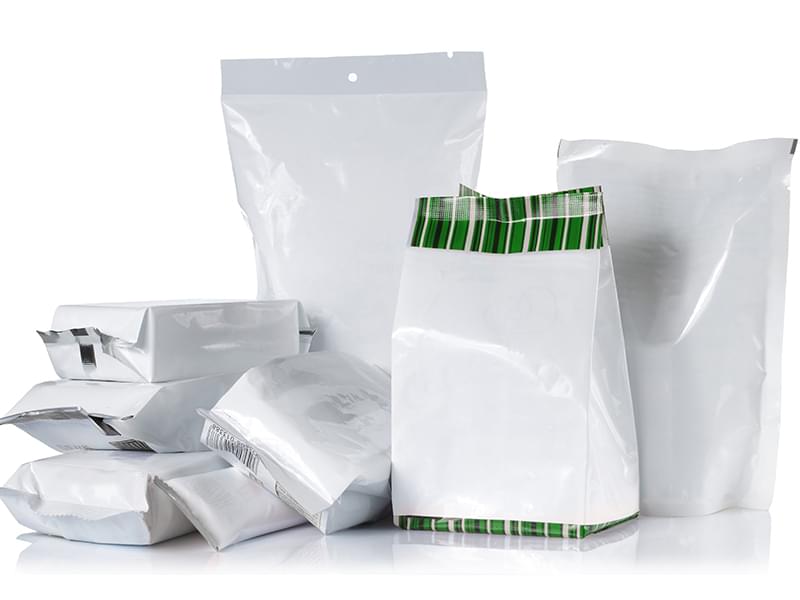Packaging has become increasingly indispensable to our modern lifestyles, as it helps maintain the integrity of products, prolongs shelf life, and ensures customers’ needs are met in our fast-paced world. Flexible plastic packaging stands out among the packaging formats due to its formability, low weight, and cost effectiveness. Snack bags to detergent pouches, flexible packaging is everywhere — and for good reason. In this article, we take a look at what flexible plastic packaging is, its main advantages and uses, and a look at future trends in the industry.
What Makes Up Flexible Plastic Packaging?
Flexible packaging – Any package or any part of a package whose shape can be readily changed. It is usually constructed of materials like polyethylene (PE), polypropylene (PP), polyethylene terephthalate (PET), or other plastic films. These materials may be laminated with other materials such as aluminum foil or paper to provide, for example, increased durability, resistance to moisture, and barrier protection.
Some of the products of flexible pack include:
- Stand-up pouches
- Sachets
- Shrink wraps
- Vacuum-sealed bags
- Stretch films
- Zip-lock bags
Flexible plastic packaging’s versatility for use across a wide variety of applications in several industries has made it one of the most popular forms of packaging across the globe.
Advantages of Flexible Plastic Packaging
- Lightweight and Space-Saving
Ease The first and foremost benefit related to flexible plastic packaging is its weight. It saves on transportation cost and carbon emissions versus hard packaging alternatives. Since it is space-saving, it is easy to store and stack, and provides higher logistics efficiency.
2. Design & Branding Customizable
Flexible plastic enables brands to play around with bold designs, shapes and printing effects. High-definition graphics and colors assist companies increase product visibility and appeal with consumers at the retail shelf level.
3. Extended Shelf Life
Most flexible packaging formats offer barrier protection for moisture, oxygen, light and other external factors. By this the fresh and the good quality of food as well as other perishablel items is maintained and the wastage is reduced inturn.
4. Convenience for Consumers
Easy-to-open, resealable closures and portion-sized packs translate to consumer-friendly flexible plastic packaging. It is very portable and convenient, catering to the needs of the busy lifestyle and out-the-door consumption behavior.
5. Minimal Environmental Impact (If Done Right)
Whilst plastic has had its failings in terms of environmental impacts, according to WRAP, flexible 30 plastic has the potential to be better than other types when taking into account the whole life of the product. And because it takes fewer raw materials and less energy to produce and transport, its carbon footprint can be considerably smaller. And advances in recyclable and compostable films are helping to make flexible packaging more eco-friendly.
Typical Applications in Various Industries
Flexible plastic packaging applies to many industries and is popular because it is so versatile and protective:
- Food and Beverage
Flexible packaging is the largest consumer of the food industry. Food such as chips, sauces, frozen foods, pet food, and ready-to-eat meals/snacks are typically packaged in flexible pouches or bags for easy access and to keep food fresh.
2. Medical and Drugs
Health care products and drugs are the key beneficiaries of sterile, tamper-evident flexible packaging. Bubble packs, strip packs, and medical pouches protect and preserve vulnerable medications and devices.
3. Personal Care and Cosmetics
Flexible tubes and sachets are commonly used for shampoos, lotions, facial masks and creams. These kits are easy-to-use and reduce product waste.
4. Household Products
Cleaning compositions, detergents and sanitizers are now commonly sold in variously shaped flexible refill packs or pouches which are non-spill, resealable and environmentally friendly.
Challenges and Concerns
Even though flexible plastic packaging has many advantages, it is not without its drawbacks. One of the biggest worries is recyclability. Some flexible plastic film becomes hard or impossible to recycle in traditional ways due to the multilayer nature of the material. Furthermore, improper disposal leads to pollution of the environment especially of oceans and water bodies.
These drivers have led to responsive action being taken by governments, industry and the environmental community in the form of the:
- The development of mono-material films for easy recycling
- Application of extended producer responsibility (EPR) schemes
- Investment in recycling infrastructure and technologies
- Educational programmes about consumer’s role in correct final disposal
Future Trends in Flexible Plastic Packaging
As consumers and the regulatory environment change, so too is the flexible packaging sector. Here’s what we’re watching:
- Sustainable Materials
There are more companies that invest in biodegradable and compostable plastic films. Pouches made of recyclable mono-material, and bio-plastics based on corn starch or sugarcane, are gaining in popularity.
2. Smart Packaging
New technologies, such as QR codes, freshness indicators and tamper-evident seals, are being incorporated into flexible packaging to improve usability and security.
3. Digital Printing
Thanks to digital printing technologies, which allow for short print runs, and thus a faster turnaround, personalizing packaging is quickly becoming an accessible option for brands (while small minimums make limited-edition packaging launches more manageable).
4. Circular Economy Initiatives
Businesses are implementing closed-loop recycling processes and utilizing higher volumes of post-consumer recycled (PCR) material in their flexible packaging solutions.
Conclusion
Flexible plastic packaging continues to be a game-changer in the world of modern packaging. Its combination of functionality, cost efficiency, and consumer appeal makes it a preferred choice across multiple industries. While environmental concerns remain, ongoing innovations in materials, recycling technologies, and sustainability practices are paving the way for a more responsible and circular future. As businesses and consumers alike prioritize convenience and environmental impact, flexible plastic packaging is poised to remain a vital component of the global packaging landscape.





